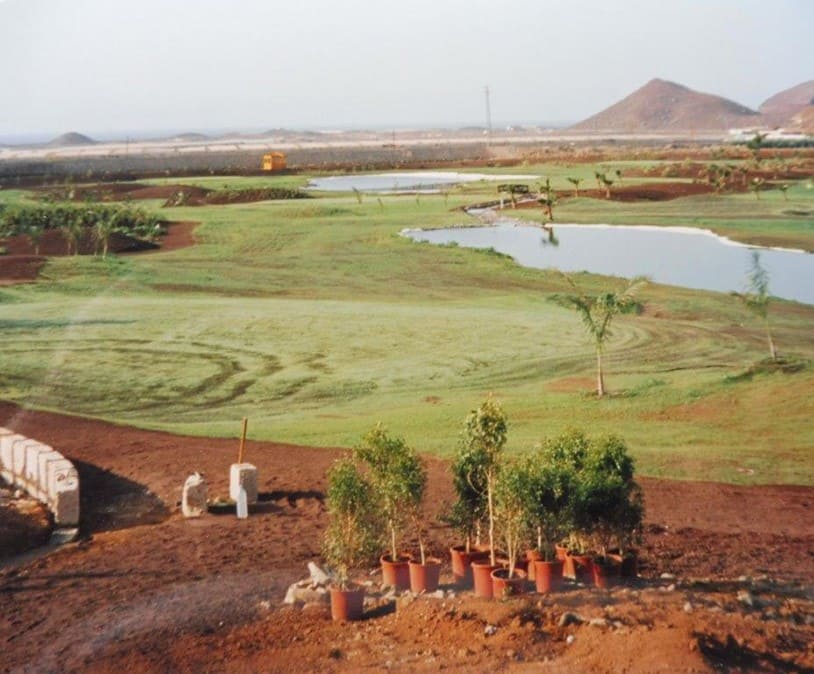Main types of bunkers found on a golf course
Bunker in golf is one of the areas that make up the surface design of the golf course and, along with lakes and vegetation, provide interesting challenges for the player.
These popular sand traps can take on various shapes, depths, and sizes. Additionally, they can be positioned as guardians of greens, on fairways, or alongside them. It is one of the oldest elements of this game that allows testing the golfer’s skills.
Below, we will examine in detail the main types of bunkers that can be found on a golf course.
First, let’s define what a bunker is in golf
According to the Complete Edition of the Rules of Golf, a bunker is a specially prepared area with sand and a certain depth, designed to test your playing ability.
Originally, bunkers were areas of land hollowed out by cattle hooves to protect themselves from the weather, which over time formed large depressions. Now, typically, bunkers represent an artificial depression in the surface, from which earth and grass have been removed.
If you are an expert in golf, bunkers will probably not be a big obstacle for you. But if you are an amateur, they can be one of the dreaded areas on the course. In any case, you should do your best to avoid these relentless sand traps, as they are notorious for ruining your scorecard.
In general, the rules are well defined regarding what is allowed or not when a ball falls into one of these sand traps, imposing some limitations to face the challenge.
So, golf bunker or sand trap?
In common lexicon, players often refer to bunkers and sand traps interchangeably. But in reality, the Rules of Golf only define the term “bunker,” and there is no mention of “sand traps.”
Therefore, the official term to refer to these challenging areas is “bunker.”
Types of Bunkers on the Golf Course
In general, different types of bunkers should have a sufficient size for a player to stand inside the sand and play a shot from the center. If the trap has been properly designed, it should have a bowl shape, allowing the ball to rest in the central area of the bunker.
Based on their location on the course, the following types of bunkers can be distinguished in golf:
Fairway Bunker
Fairway bunkers are sand traps located farthest from the green, near the landing area, crossing the fairway partially or entirely. Their main purpose is to serve as a brake for those deep shots, making it challenging to reach the green comfortably.
This golf bunker is tough, prompting additional shots, challenging the player, and forcing them to enter the sand. One of the recommendations is to use a longer club, as it provides better control when hitting the ball.
Approach Bunker
Approach bunkers are typically situated 50-100 yards from the green, posing a challenge for the second shot.
They are often deeper and larger than fairway bunkers and can even be used to create an optical illusion. For example, a bunker on the golf course located before a hidden depression may create the illusion that the approach shot is tighter and shorter than it actually is.
Green-side Bunker
These are the most dangerous bunkers on the golf course, as they carry the highest penalty for golfers. They visually complicate the shot to the green, and there is a higher chance of erring when hitting the ball from their sand.
One of the secrets to playing from a green-side bunker is executing a smooth swing but with a consistent speed, gently making the clubhead strike the sand.
Compared to approach and fairway bunkers, which have shallower faces, the ball must cover a shorter distance to reach the surface here.
Waste Bunker
A waste bunker is a golf bunker with natural sand and of significant size. It is not a prepared hazard, so the rules of the game do not define it as an obstacle. However, it can still excessively challenge the shot.
Since it is not officially considered a bunker, players are allowed to use the club to remove any loose impediments near the ball that hinder the shot.
Types of Bunker Associations
Sand traps can also be arranged in various types of associations:
Centralized: A bunker is centralized when it divides the fairway into two. Some traps are round, but most are narrow and elongated.
- Centralized: A bunker is centralized when it divides the fairway into two. Some traps are round, but most are narrow and elongated.
- In groups: Here, 3 or more bunkers are arranged together.
- In pairs: In this case, bunkers are placed in pairs but on opposite sides, on the green and the fairway.
- Diagonal: It’s a strategic arrangement where a series of bunkers are grouped diagonally, crossing the fairway.
- Staggered: Bunkers are located in pairs between the green and the fairway but at different distances, staggered.
Regardless of the type of bunker, they can present various variations, with steep or gentle slopes, designed in the shape of symbols, or even containing different types of sand, like fine and dry sand or some that retain water and remain damp.
They can also contain rocks, grass islands, trees, or be implanted in groups or alone.
In any case, these golf bunkers are arranged solely to complicate our shot of the ball.

